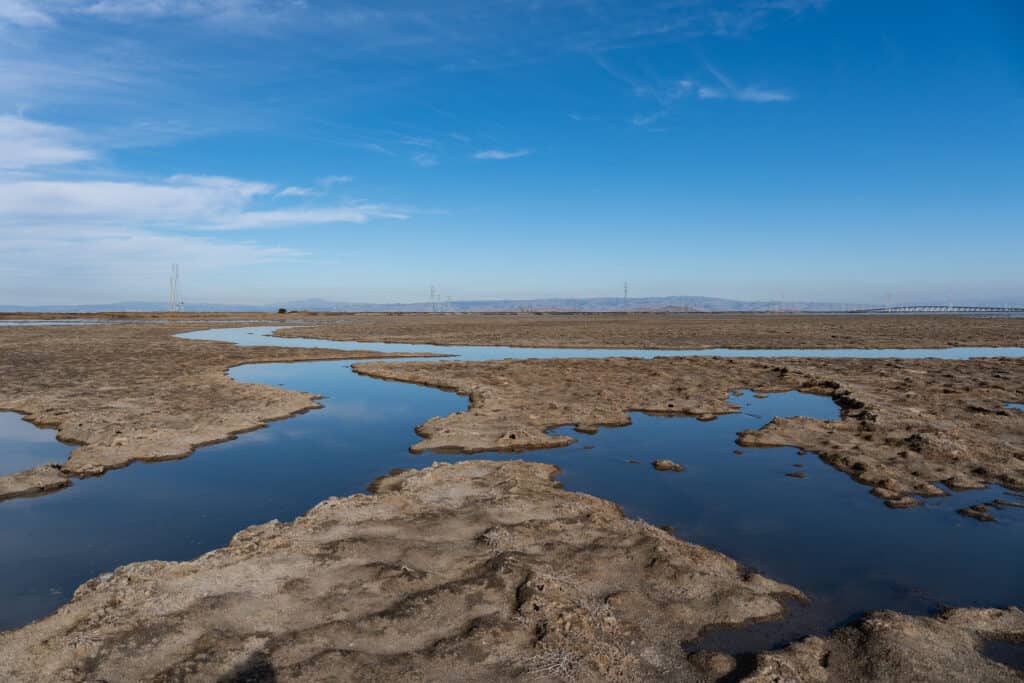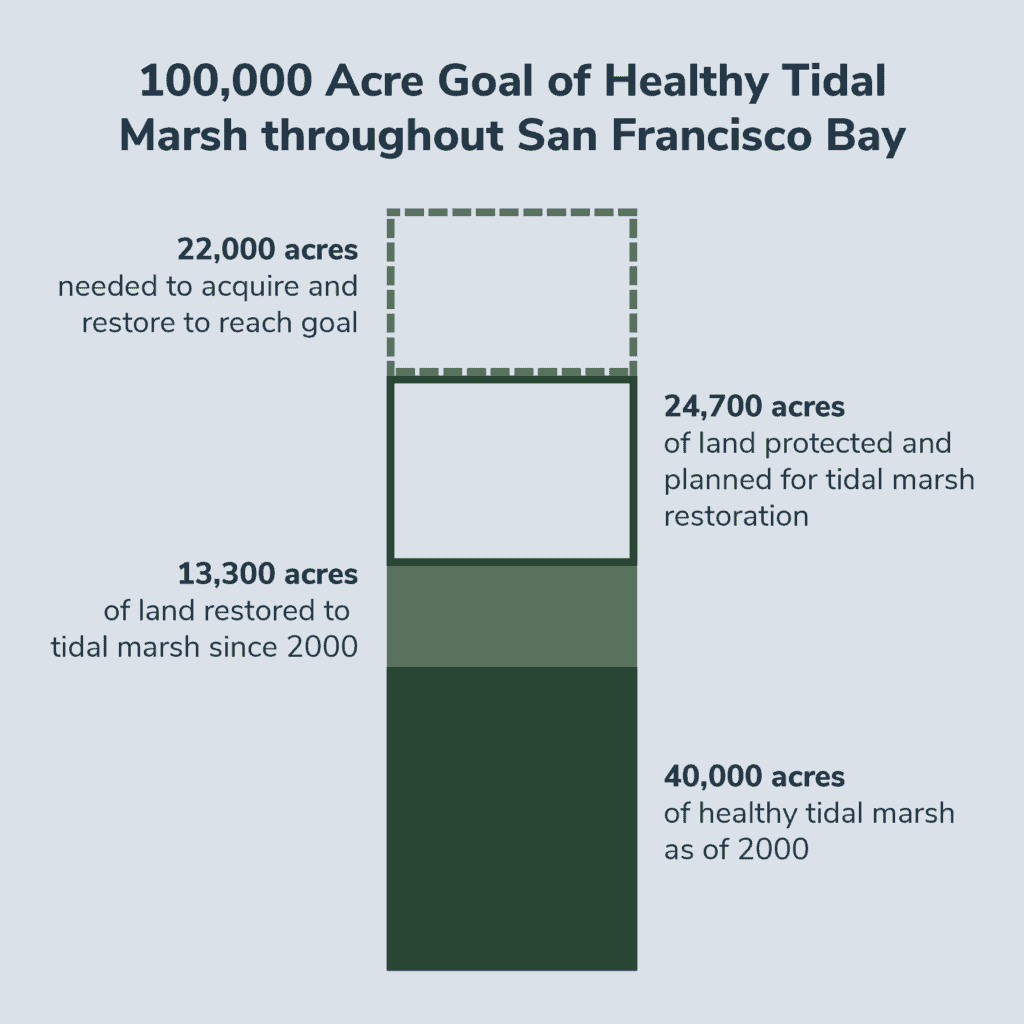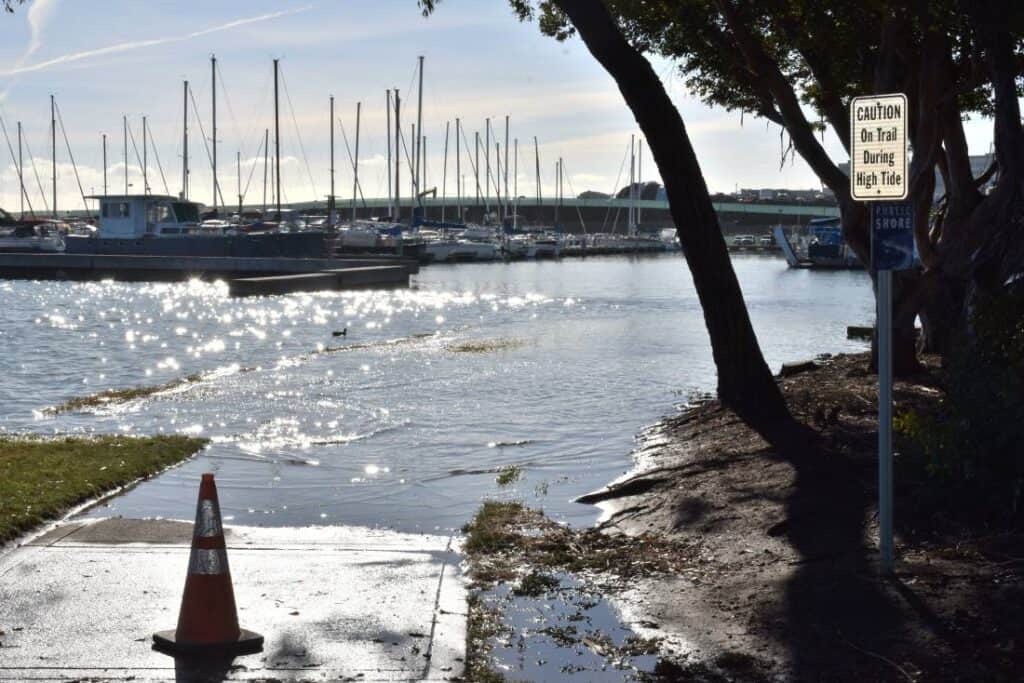Last month, in December 2023, 300 acres of tidal marshland were returned to the San Francisco Bay. A planned levee breach allowed water from the Bay to fill a former industrial salt pond that had been cut off from the Bay for over 100 years. The levee breach was part of the South Bay Salt Pond Restoration Project, an effort to restore 15,000 acres of historic tidal marsh. Healthy tidal marshes provide valuable habitat, encourage recreation, and protect against sea level rise by acting as a natural sponge to temper the effects of storms and rising tides.
Though this latest addition of wetlands to the Bay is an exciting step forward, there are still tens of thousands more acres that need to be restored.

Funding Needs: Money We Have and Money We Don’t Have
In order to reach the region’s goal of having 100,000 acres of protected or restored tidal marsh in the Bay Area, the region needs billions in additional dollars allocated towards shoreline projects. A study by the Association of Bay Area Governments (ABAG) estimates that preparing the Bay Area1 for 17 inches of sea level rise by 2050 will cost approximately $110 billion. This number includes wetland restoration as well as other shoreline protection strategies such as levees, tide gates, sea walls, and roadway elevation.
Existing funding sources include $25 million a year from Measure AA, a voter-approved parcel tax passed in 2016 to finance wetland restoration projects. Additional funding sources include federal funding (last year the EPA was allocated $54.5 million to spend on Bay restoration and water quality projects), competitive grant opportunities (including NOAA, CA Coastal Conservancy, and US Fish and Wildlife grants), and funding through the California state budget.
However, these funding sources are not enough to meet the need, and the availability of funds can dip in deficit years. We’ve seen that in this year’s proposed state budget which cut approximately $450 million in sea level rise adaptation and coastal/ocean protection funding.

Funding Solution: Climate Bond
In order to fill in the gap in funding for sea level rise adaptation and wetland restoration, we believe the state needs a climate bond. Legislators are currently working to pass a climate bond to raise billions of dollars for climate resilience and mitigation solutions, which will require strong support and political will to get through the legislature, signed by the Governor, and onto the ballot for voters to vote on.
We hope to see a climate resilience bond on the ballot in November 2024 to raise crucial funds for the state’s decarbonization and climate adaptation goals, including sea level rise resilience projects.
Steps for passing a climate bond
- The state legislature passes the climate bond bill (Read about how a bill gets passed in California here)
- The Governor signs the bond bill
- The bond goes on the ballot for voters to approve, and it must be passed by a majority of California voters
A Bay Champion: Assemblymember Diane Papan

We’re proud to have a Bay champion in Assemblymember Diane Papan, who understands the urgency of preparing the Bay Area for climate change. Her district, Assembly District 21, encompasses much of the Bay-adjacent San Mateo County, the county that’s most at risk of sea level rise in the whole state. Through her previous positions as mayor and city councilmember of San Mateo and now in her role as state Assemblymember, Papan has focused on addressing the challenges of flooding and climate change.
She is a co-sponsor of the climate bond bill, and she was recently named chair of the Assembly Water, Parks, and Wildlife Committee, which positions her well to champion bills that further the use of nature-based climate solutions and that protect clean water, air, and open space. We look forward to continue working with Assemblymember Papan to prepare the region for the impacts of sea level rise and flooding that it will face in the coming decades.


















































